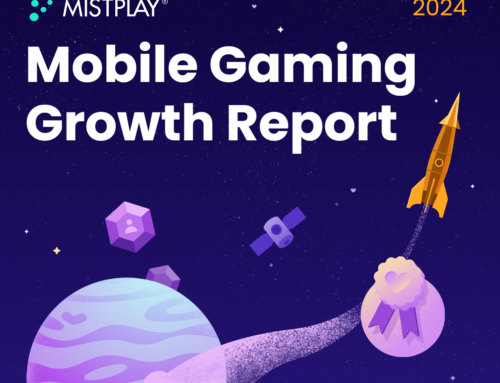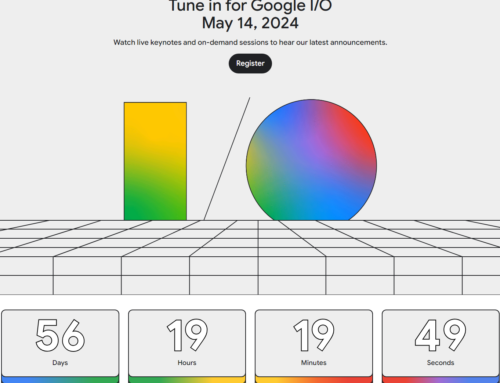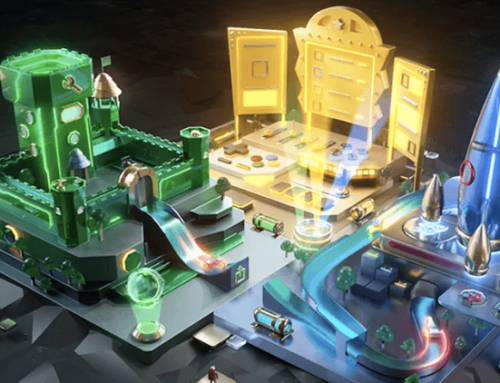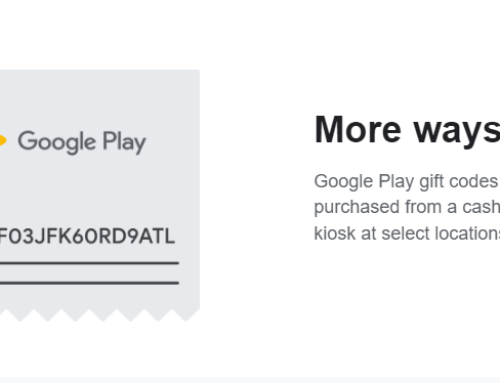Why mobile apps are cheap
Before mobile apps went mainstream, desktop apps ruled in terms of volume. And prices for desktop apps rarely were below $9.99, with maximums of thousands of $ (i.e. for specialized software such as 3D modelling). Those prices made sense, because software requires a lot of development and regular maintenance.
Then mobile apps started popping and Steve Jobs did something awful for app devs. He imposed a price of $0.99 for ebooks/songs that quickly became the de-facto limit for apps as well. In fact only recently Apple increased the minimum price (for paid apps) to $1.19, as before it always was $0.99. I say that’s price fixing and is awful for 2 reasons:
- First of all, app development became devalued. Sure the volumes for mobile apps are higher than desktop, but still most devs earn nothing.
- Second, users are now accustomed to getting either free apps or for very cheap (i.e. $0.99), which reduces the quality of the apps. Most users won’t pay above that small fee so devs are forced to cut either in their profits or in the quality of the app.
This doesn’t mean that there are no pricey apps out there, just that those are quite unpopular.
Google has an upper limit as to how much a paid app/game can cost and that limit is set at $400. As soon as Google imposed that limit, some devs thought of releasing “The most expensive app” and thus now we have hundreds if not thousands of apps that cost $400 but do practically nothing. They just wanted to earn the title of the most expensive app for Android. If an app is $400, even 1 accidental purchase might earn that dev a bunch of money. As you can see below, most will “show a diamond” or say something such as “I’m rich” but practically no value whatsoever.
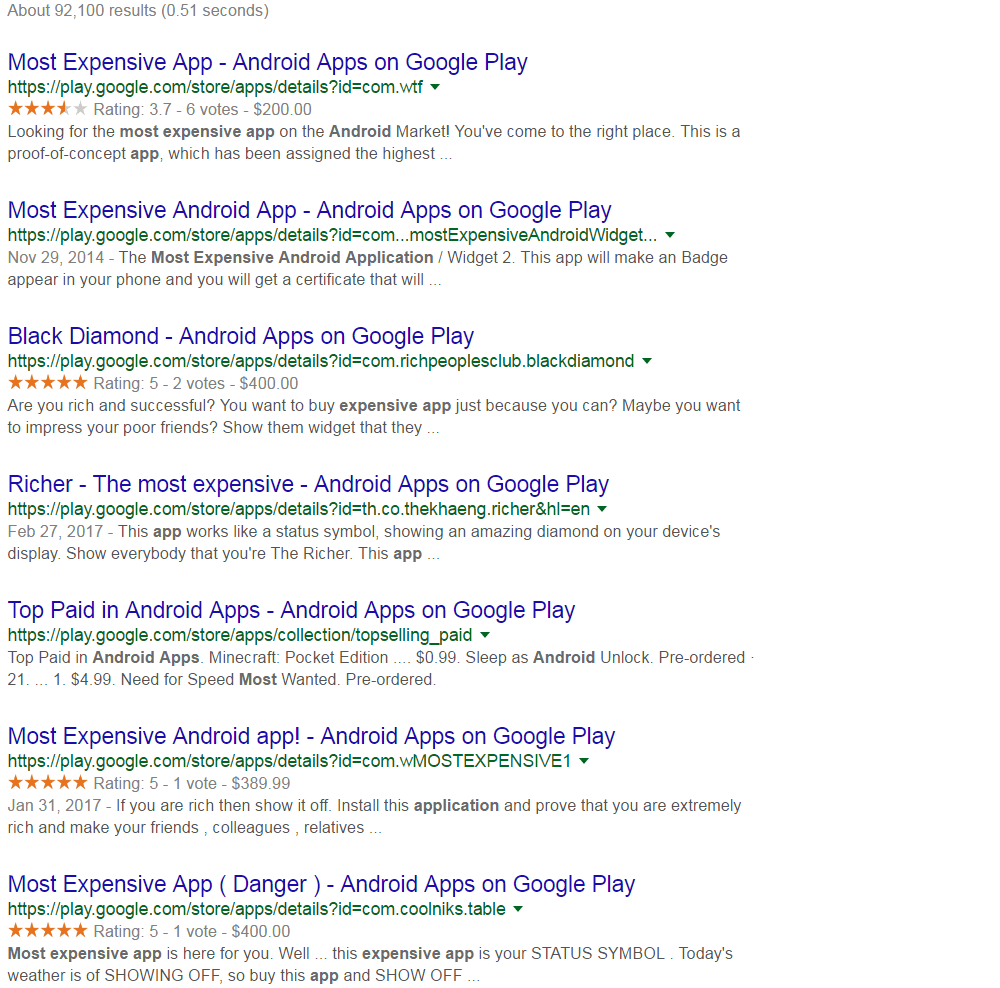
So technically yes, the apps you see in the screenshot above are the most expensive apps in the Google Play store. However, I’m discounting them for the lack of value. Instead I’d like to mention the most expensive Android apps that add real value and aren’t just a marketing ploy.
The most expensive Android apps
The 15 most expensive Android apps that are also popular:
- Litchi for DJI Drones ($25). This app is targeted at DJI drone users and that explains the price tag. It’s a popular app while having 20+ times the price of other apps.
- Construction Master Pro ($25). This developer (Calculated Industries) has an even more expensive app, Machinist Calc Pro2 (at $30), however their construction master pro is in the top 400 paid apps worldwide with thousands of installs. It’s obviously an engineering app (niche) and that explains the price tag as there aren’t many alternatives.
- Exchange by TouchDown ($20). Touchdown is a popular (free) email app and this is an extension for it to allow connecting your Exchange Server to get Email, Contacts, Calendar and Tasks with TouchDown. One of the few Exchange sync apps and that pays off.
- Gaia GPS ($20). An offline GPS app that gives you offline topo maps, satellite maps, and specialized map layers. Targeted at outdoor pursuits more than at drivers, thus low competition.
- FL Studio Mobile ($16). Create and save complete multi-track music projects on your Android Phone or Tablet. Record, sequence, edit, mix and render complete songs.
- PDG PROmote 2015-2017 ($14). This is a study guide app aimed to prepare Airmen who are taking the Air Force Promotion Fitness Examination (PFE) or the USAFSE-United States Air Force supervisory examination.
- iReal Pro MusicBook ($13). iReal Pro is a tool to help musicians of all levels master their art.
- AntiVirus PRO Android Security ($12). This is AVG for Android and they can afford to charge this much as AVG is a highly established brand.
- BackCountry Navigator TOPO GPS ($12). Another GPS app with offline outdoor navigator. The offline package makes it suitable for situations when cell coverage isn’t available (i.e. hiking and other recreations).
- DRAGON QUEST VIII ($20). This is the most popular expensive game on Android, banking on the success of the desktop game, DRAGON QUEST VIII (4.9 million units sold).
- FINAL FANTASY IX ($21). The Final Fantasy franchise is almost all in the top paid games and almost all of them have prices between $16 and $20. The dev banks on the brand name and does it well.
- The World Ends With You ($18). Yet another game SQUARE ENIX (Final Fantasy maker). All their games are paid and very expensive, but also popular. Good for them.
- Tomb Raider ($15). I’m actually glad Tomb Raider is on the top of the most popular Android games even with this price tag, considering that it hasn’t been updated in awhile. I’m glad because I was a great fan of Lara Croft… and her outfits.
- This War of Mine ($15). A nice game inspired by real-life events. Definitely worth at least a look.
- Apollo Justice Ace Attorney ($13). Final on this list another game that goes above the $10 threshold and still gets success with thousands of copies sold.
The above apps and games are the most expensive apps for Android that are also popular. This doesn’t mean that there aren’t apps/games that are useful but also more expensive than the above ones, it just means that these were in the top 400 paid apps. An example of 2 very expensive apps: Zollinger’s Surgery Atlas 10/E that sells for $280 and a comprehensive medical atlas; Harrison’s Internal Med 19/E that sells for $250, another medical atlas – unfortunately due to their price tag both have very few installs.
Android apps pricing strategy
So what is the conclusion judging by the price tag and targeting of the most expensive apps for Android? You must find a niche and then you can put whatever price you want. The narrower the niche, the better. If there aren’t competitors then you’ve hit the jackpot, as you can put a high price until competition realizes the opportunity. By then you should be the de-facto in that niche and keep on banking.
Sure, if you have an unique idea and a great niche you can put whatever price you want for your paid Android app. But if you have neither of these and still want to sell your app, what is the best pricing strategy you should pick?
The only logical response here is to test the best suited price for your app. Start with the lowest price you consider fit and increase it little by little and see if your revenue increases (as prices go up, less users buy it but revenue should increase). To help you here’s a statistic of the prices used by Android apps listed on Amazon:
- $0 – 324,508 apps
- $.01 to $.99 – 23,863 apps
- $1.00 to $1.99 – 13,979 apps
- $2.00 to $5.99 – 11,390 apps
- $6.00 to $9.99 – 1,504 apps
- $10.00 to $19.99 – 2,077 apps
- $20.00 & Up – 1,412 apps
So I’d start with a price close to $0.99 and then increase it up until $5.99 while checking the revenue. If revenue drops at any level, go back a step. I wouldn’t go higher than this.
How’s your experience with paid apps? Feel free to share a comment if you’re a dev or an user, as long as it’s a pertinent comment related to pricing Android apps. Thank you!
Featured image credit: wadamen @ DeviantArt

